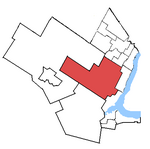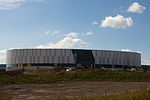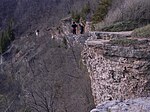Rattlesnake Point (Canada)

Rattlesnake Point is an eco-tourism area located in Milton, Ontario, Canada and is owned and operated by Conservation Halton. Spanning roughly one hundred square kilometres across and near the Niagara Escarpment in Halton Region, the Rattlesnake Point area is home to many golf courses, country markets and equestrian training and boarding facilities. It is a popular scouting area.As urban sprawl continues to increase in Southern Ontario, new housing developments in Milton have begun to encroach upon Rattlesnake Point. Land once deemed off-limits because of its relatively difficult accessibility and seemingly untouchable status as a United Nations Biosphere-protected area is being sought after for its prime real estate value as an underdeveloped and environmentally pristine region near the core of one of Canada's most dense urban areas. Rattlesnake Point is often visited by cyclists, hikers and climbers due to the array of beautiful caves and cliffs. Rattlesnake Point receives its name from the snake-like path cut by glaciers along the edges of the Niagara Escarpment, rather than from the Massassauga Rattlesnake.
Excerpt from the Wikipedia article Rattlesnake Point (Canada) (License: CC BY-SA 3.0, Authors, Images).Rattlesnake Point (Canada)
Appleby Line,
Geographical coordinates (GPS) Address Phone number Website Nearby Places Show on map
Geographical coordinates (GPS)
| Latitude | Longitude |
|---|---|
| N 43.4676 ° | E -79.9127 ° |
Address
Rattlesnake Point Conservation Area
Appleby Line
L9T 9M1
Ontario, Canada
Open on Google Maps









